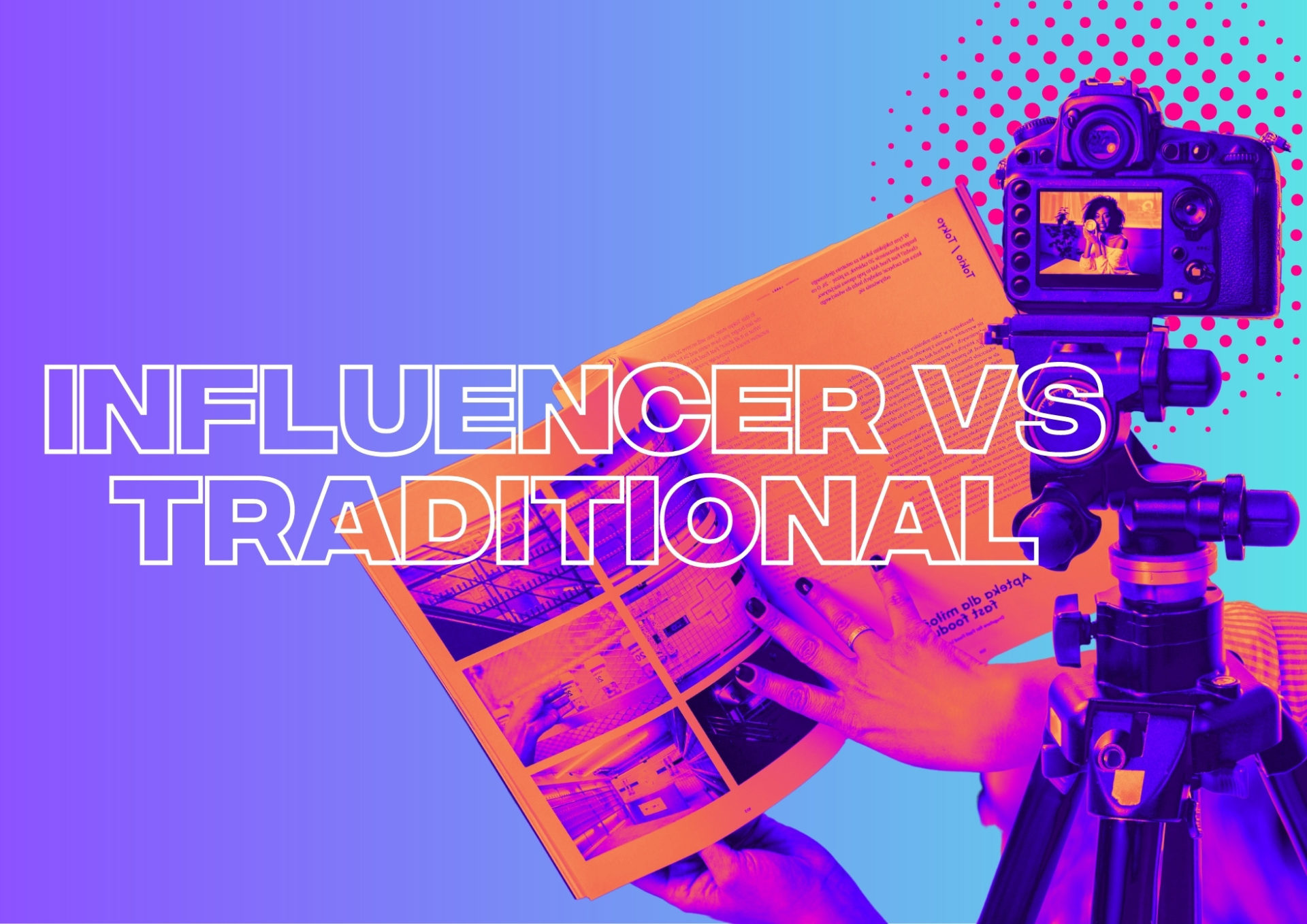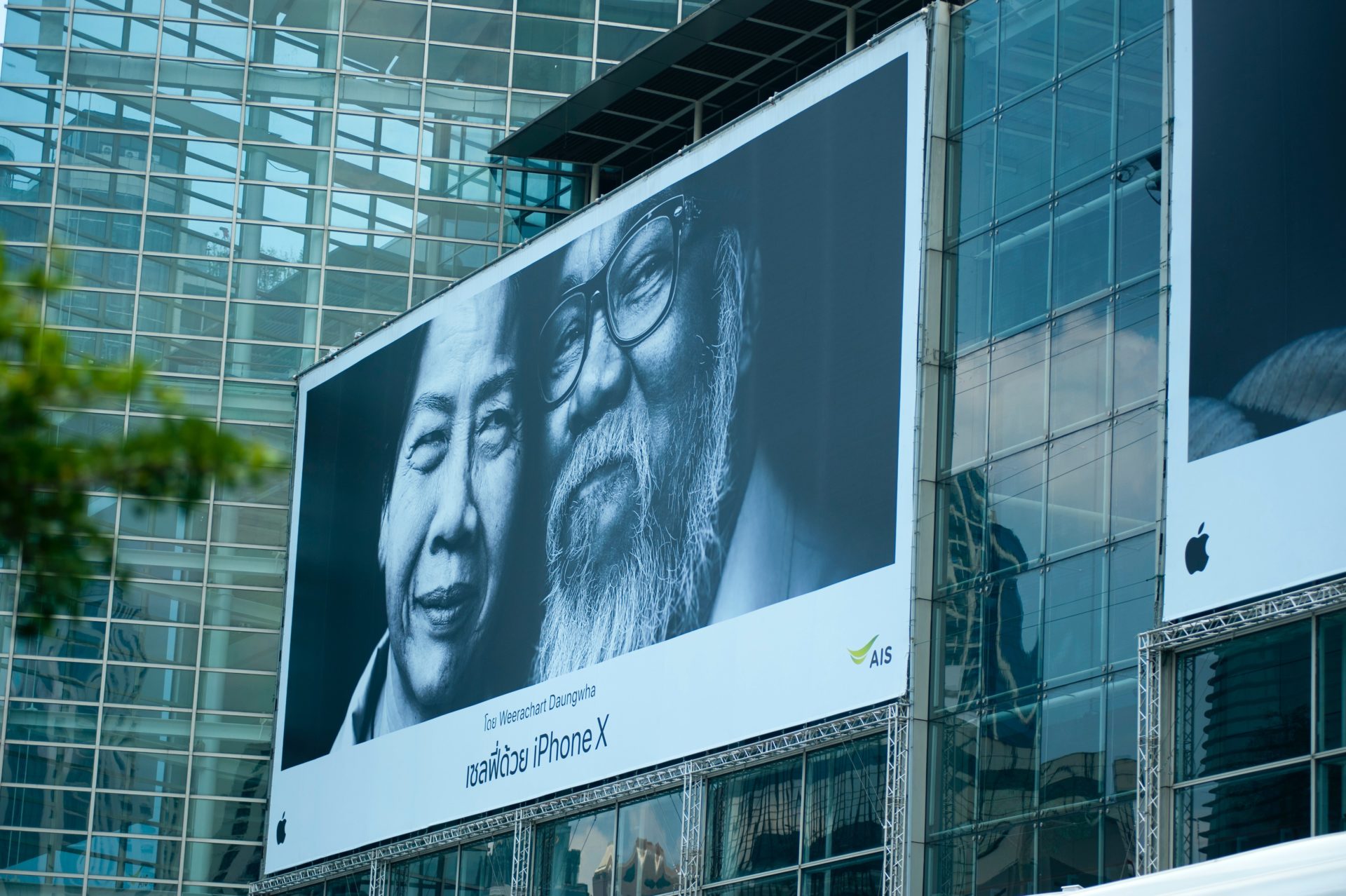Influencer Marketing vs. Traditional Marketing: Which Is Better?
Jul 14, 2023
Marketing News

In the digital age, the debate surrounding influencer marketing vs. traditional marketing, remains. Given that 63.5% of the world’s population has access to the internet, it begs the question: which is better? And more importantly, which is better for your business?
Whichever side you fall on, there is no questioning that consumer behaviours have changed over the years. Where people were once enticed by generic billboards and TV ads, the modern-day consumer now looks up to influencers for product and service recommendations.
A more hyper-focused approach to ad targeting has led to an increase in influencer marketing services, globally. Younger audiences nowadays even aspire to be like the influencers they look up to, rather than follow a traditional career path. While this generational shift is happening at the hands of influencer marketers, does this now mean that the rejection of traditional marketing methods is increasing also?
This blog will answer the previously proposed questions and offer valuable, expert insights into how you should approach the topic of influencer marketing vs. traditional marketing from a business perspective.
Curious?
Read on to find out more!
Influencer marketing, explained
Though the term ‘influencer marketing’ has been a buzzword for quite some time now, many are still unsure about what it actually means.
This marketing technique is a hybrid between new and old marketing tools. It takes the traditional idea of celebrity endorsements and places it in a modern-day setting.
In short, brands collaborate with online influencers to either sell a product or service or simply gain brand recognition. Types of collaborations include sponsored content, gifting/free samples, takeovers and giveaways.
The title of “influencer” was once given to full-time bloggers or celebrities, but is now a crown anyone with an engaged following and social media presence can adorn. Engaged audiences not only allow brands to hyper-target their desired consumers, but are also more likely to drive conversions due to how much they trust their favourite influencers.

Traditional marketing, explained
Next up, we have traditional marketing.
Before influencer marketing, brands used to engage and interact with customers offline (oh, the horror!).
Typical customer engagement strategies included print ads/handouts, radio/TV broadcasting, billboard campaigns, telemarketing (think QVC) and direct mail. These methods were great for reaching a wide audience. Think about how many people look at billboards, especially in busy areas, or how many people listen to the radio on their way to/from work.

Influencer marketing: Pros
It is more focused
Where traditional marketing isn’t targeted towards a specific demographic, influencer marketing is directed at a highly-relevant audience. Brands using influencer marketing will typically take their time when choosing an influencer to work with to ensure they are reaching the exact desired audience.
It is more trustworthy
When it comes to influencer marketing vs. traditional marketing, influencer marketing wins the trust competition.
Modern-day consumers are growing increasingly more tired of scripted messages and now seek authenticity instead. An influencer’s unbiased voice and opinions is what makes them well respected.
It’s for every business and every budget
Much of the influencer marketing vs. traditional marketing debate revolves around cost.
Influencer marketing doesn’t require brands to dig as deep into their pockets as traditional marketing does. Even small startups have the option to leverage this method to begin building their brand.
Influencer marketing also has a better return on investment (ROI), generating 11x higher ROI than other prevalent digital marketing techniques.
Influencer marketing: Cons
It can be risky
We understand that we’ve made influencer marketing out to be a dream, but the truth is, it’s not all sunshine and rainbows.
If you are failing to deliver authentic content by picking the wrong influencers, you can easily burn through your marketing budget.
Choosing the right influencer can be hard
This is the most crucial part of your collaborations. Choosing the right influencer will ensure cost-effectiveness and that you’re reaching the right audience.
Content overload
Though it’s important to keep your content schedule full and fresh, too much content can overwhelm some users, making them unreachable altogether.
Traditional marketing: Pros
It’s widely accepted
For most of us, traditional marketing is what we’ve grown accustomed to. Therefore, it is the marketing method that is more widely accepted. For the older generations who aren’t as tech savvy or present on social media, traditional marketing is still their preferred method of discovery for new brands.
It’s flexible
Multiple traditional marketing campaigns can be run at once and in different ways. The influencer marketing vs. traditional marketing debaters who sit on the traditional side will often use this as one of their winning points.
It’s memorable
How many of you can easily name a TV ad that has stuck with you from the past? Quite a few, we imagine.
Where digital ads are susceptible to getting lost among the content that surrounds them on people’s Feeds, TV ads don’t have to compete for their shining moment.
Traditional marketing: Cons
It’s expensive…very expensive
Standard TV advertisements can range anywhere from 70k-250k. It’s no wonder that the influencer marketing backers of the influencer marketing vs. traditional marketing debate use this as their justification for their preferred method.
Check out our blog on the cost of influencer marketing campaigns.
No control over audience targeting
There are no analytics or cookies in traditional channels, meaning limited expansion opportunities.
Hard to measure
Unlike the digital world of trackable links and UTM tags, the capacity for tracking and measuring the performance of traditional marketing is miniscule.

Influencer marketing vs. traditional marketing – what’s better?
After closely examining the pros and cons of both influencer and traditional marketing, it’s time to consider what will work best for your business. Here are our key takeaways regarding reach, cost, measurements and flexibility.
Reach
Who you want to reach is a key factor in determining the marketing type you should use. If you wish to target a more mature audience, then consider using traditional methods, but if your aim is to reach the younger generations – through social media in particular – then influencer marketing is a sure way to achieve this.
From a business perspective, you’ll want to be meeting the demands of the modern-day consumer. Opting for an influencer marketing approach will allow you to keep up with these demands by hyper-targeting those you wish to speak to.
Cost
As previously mentioned, the influencer marketing vs. traditional marketing debate is heavily revolved around cost. After all, if you’re going to be spending your money, you want to make it worth your while.
Both traditional and influencer marketing have several methods from which to choose, meaning there is an option for every budget. It is no secret that traditional marketing will take a larger chunk from your pot, but if your goal is to reach a wider audience, this is the way to go.
Influencer marketing is a little more financially-forgiving, and can even be carried out for free if you collaborate with nano influencers.
Figuring out which route to take is totally dependent on your budget and your marketing goals.
Measurements and ROI
Without a doubt, the award for measurements and ROI within the influencer marketing vs. traditional marketing debate, goes to the influencer approach. Social media algorithms let you track your followers’ engagement and therefore determine which collaborations are working and which aren’t.
On the other hand, it’s hard to measure how many people listened to your radio broadcast or saw your billboard ad.
Flexibility
While multiple traditional marketing campaigns can be run at once, influencer marketing offers more flexibility when it comes to creatively relaying your message. Thanks to constant social media updates and the array of influencers it houses, you can play around with different types of content and, thus, engage more people.
And there you have it, our final thoughts on the influencer marketing vs. traditional marketing debate. Remember, when it comes to influencer marketing vs. traditional marketing, there is no right or wrong answer. Instead, you must learn to lean into whichever approach best suits your target audience, budget and marketing goals.
Our influencer marketing agency and social agency are located worldwide, with our agency network based in the USA, UK, UAE and China.
If you want to find industry insights, visit our influencer marketing and social media blogs.
@ Socially Powerful
Social And Influencer Marketing News + Insights
Get in touch
We'll show you how to start powerful conversation, drive social engagement, build your brand, hit sales targets or meet other goals you have, wherever you are in the world.
Work with us





